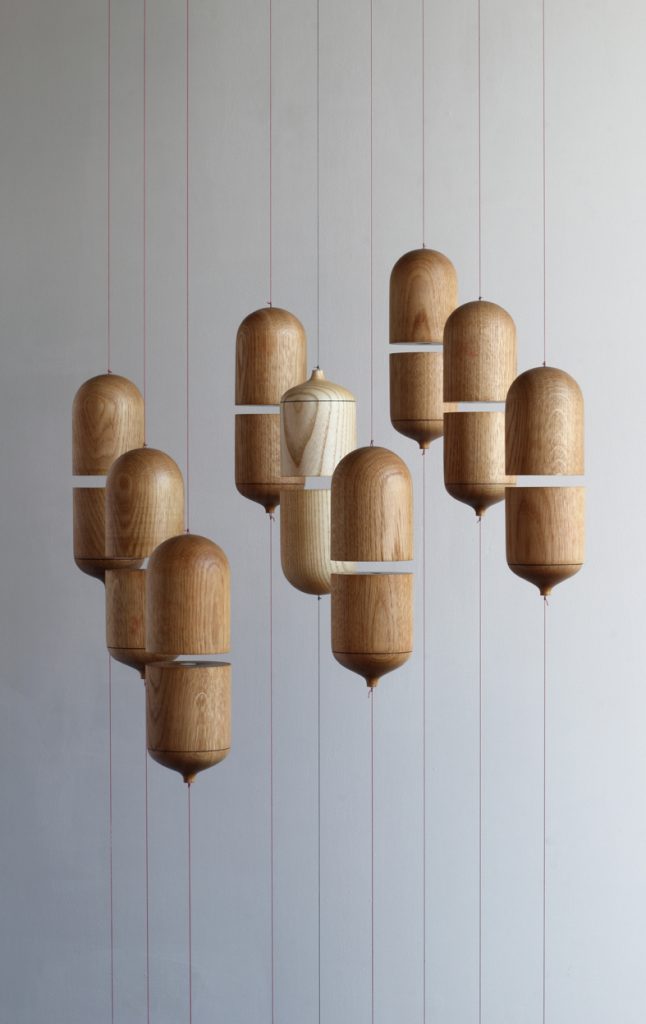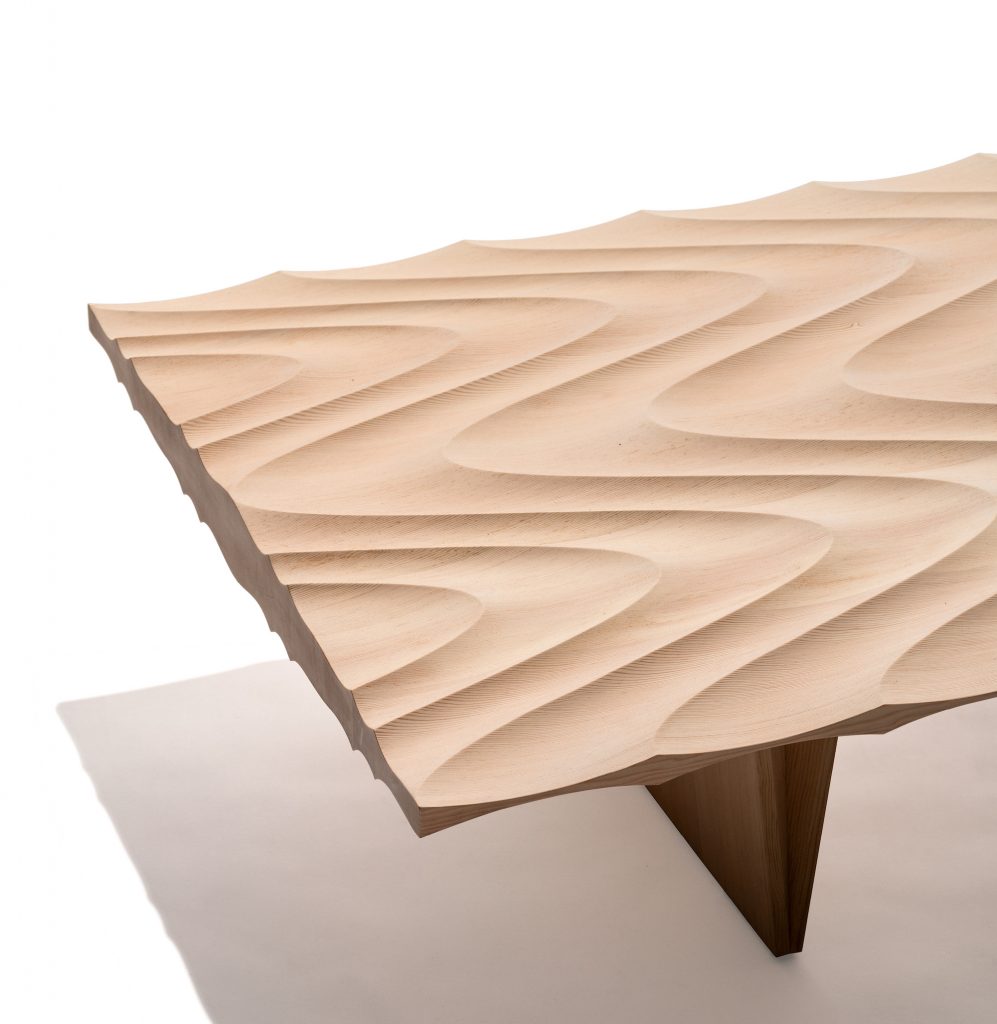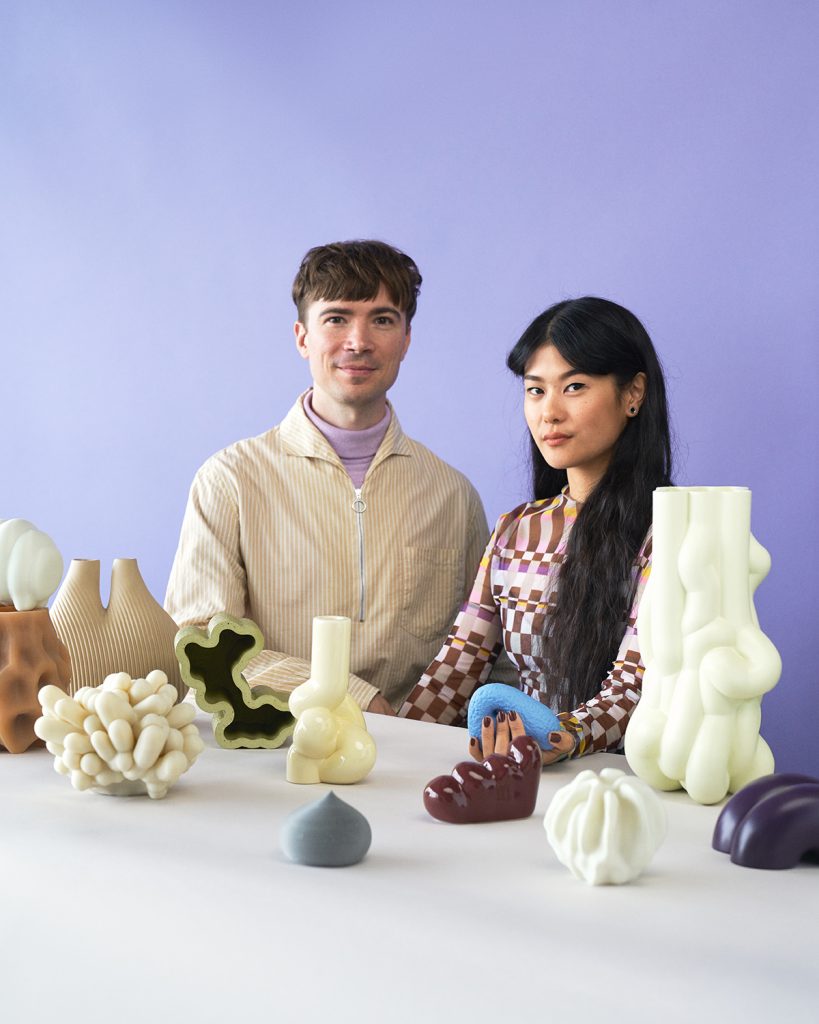Material Insights: Mycelium
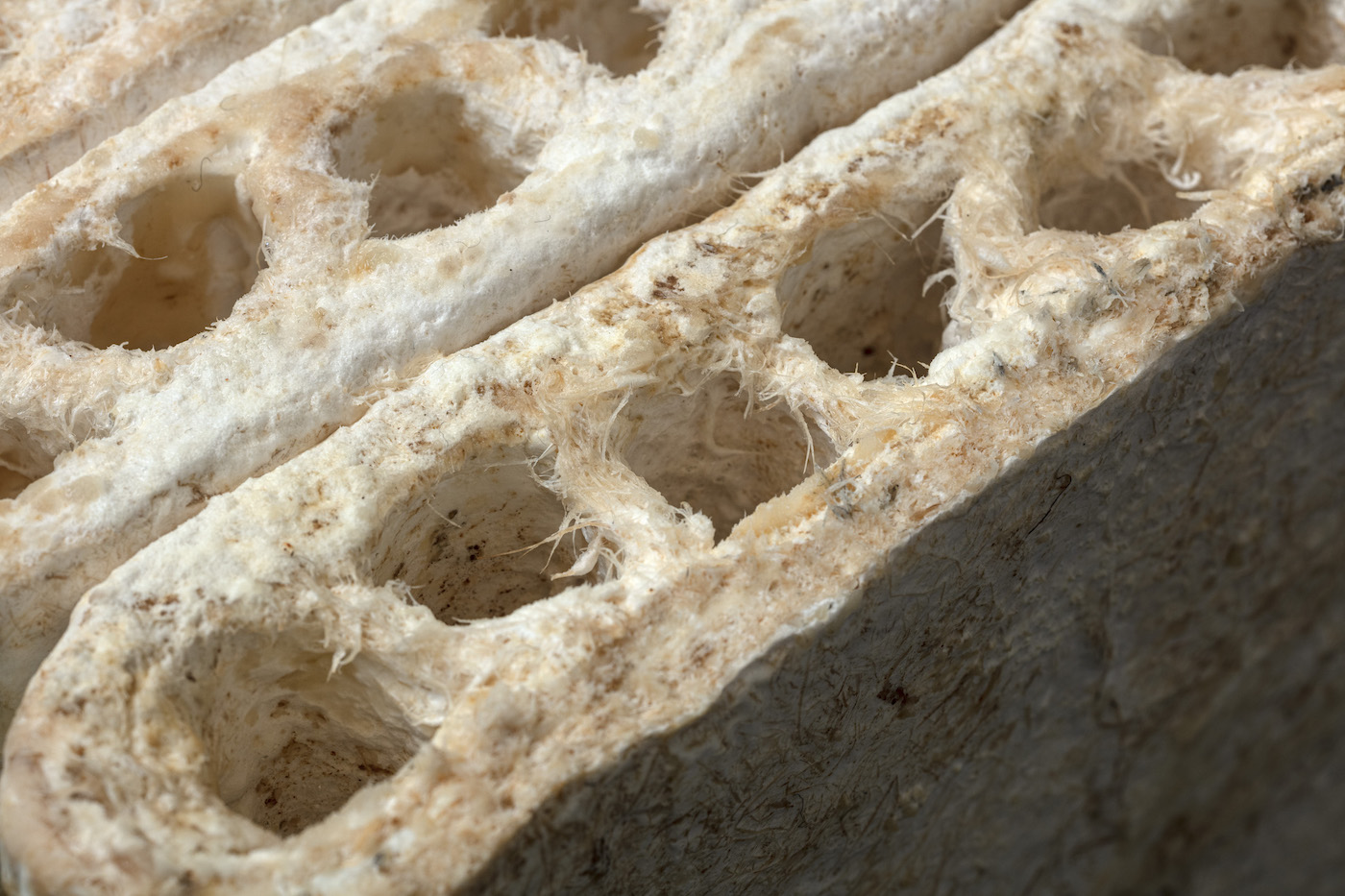
Mycelium as a material and resource for our future is gaining more and more focus worldwide. Its potentials are constantly taken to new levels. In Denmark there is one profile who stands out, designer Jonas Edvard.
Jonas Edvard is part of The Mindcraft Project – Digital Exhibition 2020 where he will present a new work made from mycelium.
Mycelium is a truly versatile resource from which to make all kinds of useful objects and materials. Its functions have gone beyond nature, art and food to becoming a replacement for wood, rubber, paper, plastic and even leather, as a sustainable alternative to a range of polluting products and production processes used today. In January, NASA announced that they are researching and exploring the technologies that potentially could grow housing structures of mycelium, to become our future homes on (yes!) Mars.

For the love of nature
For designer Jonas Edvard, some of his most precious childhood memories, arise from nature. Playing in the grass, exploring the woods, letting soil run through his fingers. Being present and appreciative for what nature has given us. Edvard is one of the designers that has transformed his love for nature into his design -using mycelium. As a designer passionate about nature Jonas Edvard is on a path where he is investigating and experimenting with how to benefit from mother nature’s treasure champers. With the urge to create, build and designing in harmony with the planet’s limited resources, Edvard has turned his attention to one of nature’s finest creations: the mushroom. And explicitly on mycelium.
In his Studio, Edvard and his team, constantly experiment and develop objects, lamps and furniture, using mycelium. They feed the mycelium with hemp and textile residues, always seeking new ways of profiting of our nature when simultaneously taking best care of it. Edvard designs and envisions a closer co-existent and respect between nature, design and man.
“When working with mycelium a connection with the material and its values occur, and you want to take care of, and respect the material in the best possible way”
– Jonas Edvard
So, when working with mushroom-mycelium he combines his craftmanship with strong aesthetics and nature. The result is lamps and experiments with furniture objects like stools and chairs. Harvesting the oyster mushrooms and eating them during the design process.

Edvard explores nature’s materials on a wider scale were seaweed and paper is also transformed into lamps and furniture. For Edvard nature is the most important component in his design. Nature is on non-stop, by using a natural source in his design, Edvard adapts a recirculation in his design that mimics a natural process. Design that is 100% natural, produced without waste and can be discarded and given back to nature without any pollution. The mushroom has been on earth long before man, it is a strong, reliable and loyal material, filled with potential. Potentials that have been explored for some time but still amazes.
Jonas Edvard is currently working together with the renowned engineering firm Arup. Arup is at the forefront when pushing boundaries within architecture, design and engineering. And they are working and experimenting with mycelium for acoustic. The importance of good acoustic isn’t new to Arup, they have been leading on this issue for decades. Arup and Jonas Edvard have teamed up and will soon be introducing The Mycelium Sail – a good example on how mycelium can become a part of our daily lives as an acoustic panel, shaping a better interior and audio environment.
Growing objects with mycelium
Mushrooms is the visible part of an amazing organism known as mycelium, most of which naturally grows underground. Mycelium is neither animal nor vegetable, this immense network of cells has been sharing nutrients and forming connections for billions of years, breaking down decaying matter and transforming it into living soil. Fungi are mostly made of mycelium – the network of fungal threads, so tiny that they are invisible to the eye, making fungi a micro-organism. Even though the network is invisible, sometimes the mycelium grows so dense that it turns into a visible and furry mass, similar as to the mold we know from stale bread. We also associate fungi with things like blue cheese, damp basements and decomposing. A decay that in nature is followed by life in an ongoing circle.
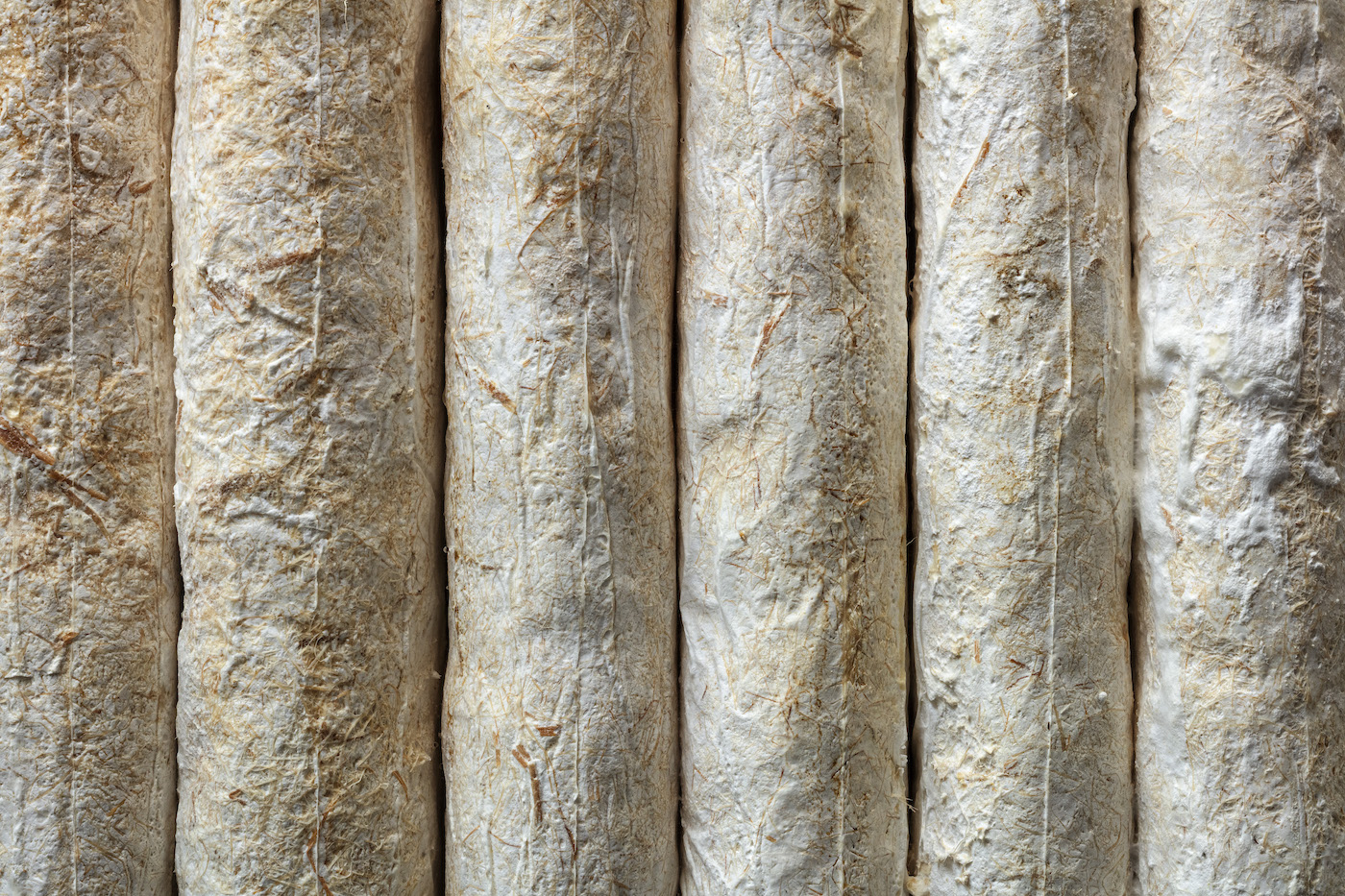
The fungi cultivate on its food source, usually organic material (wood waste, banana peel, leaves, dead animals – you get the gist). By exuding enzymes, the fungi break down sugars in organic material using it as a source of nourishment. This happens at such a fast pace and therefore it plays a major role in how natural materials are recycled in our ecosystem. Often referred to as the Wood Wide Web this is vital to the survival of our natural environment. The Mycelium is in short, the vegetative part of the fungus, a living organism, vital to our eco system.
One of the beauties about mycelium is that when handled correctly in a controlled environment the mycelium can easily be molded into any shape. The simplified version is that the mycelium can be filled into molds of a desired shape and purpose. The molds are then covered in a dark, damp and warm room, for days. The mycelium starts a slow process, creating a network that glue the mass together. After this natural process the molds are moved to a humid environment and lastly slowly baked. Hereby stopping the growth process and securing a solid form e.g. a brick, a lampshade, a chair, a vase etc. Or potentially our future home on Mars.

